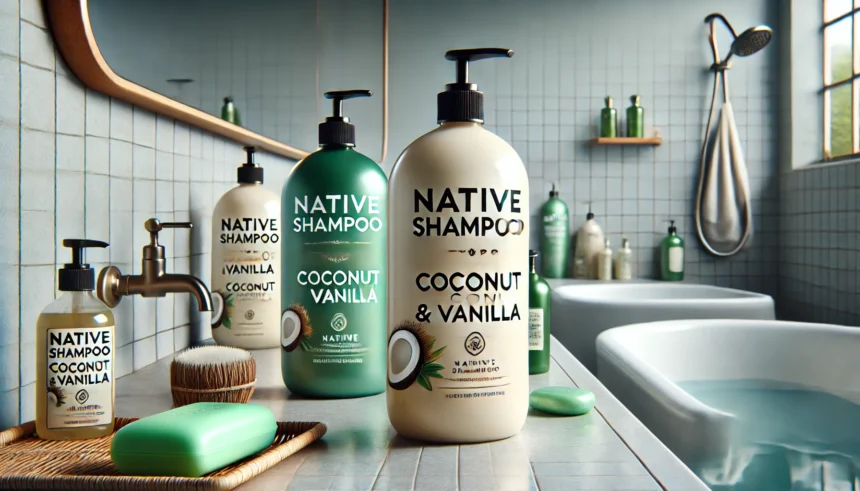The Native shampoo lawsuit has emerged as a significant legal case within the beauty industry. It raises questions about product safety and marketing practices, attracting attention from consumers and regulators alike.
This lawsuit primarily focuses on the claims made by customers regarding adverse effects experienced after using Native shampoo. Many users have reported skin irritations and allergic reactions, which led to increased scrutiny of the product’s ingredient list.
As the case unfolds, it could set a precedent for how personal care products are marketed and regulated. Consumer trust in brands may also hang in the balance, depending on the lawsuit’s outcome.
Background on Native Shampoo: A Brief Overview
Native is well-known for its natural personal care products, including deodorants and shampoos. Launched in 2015, the brand quickly gained popularity for its commitment to using clean ingredients and eco-friendly packaging.
Native markets itself as a safer alternative to traditional shampoos, highlighting its use of natural ingredients. However, recent events have prompted consumers to question whether these claims hold true.
The brand’s reputation could be at stake as the lawsuit progresses, with many eyes on how it will respond to the allegations.
What Prompted the Native Shampoo Lawsuit?
The lawsuit was prompted by numerous consumer complaints regarding skin irritations and allergic reactions. Customers reported that after using Native shampoo, they experienced rashes, itching, and other skin-related issues.
This surge in complaints led to investigations into the brand’s marketing practices. Advocacy groups began examining the product’s ingredients to determine if they were misleadingly labeled as “natural.”
With growing concerns about product safety and consumer rights, the lawsuit gained momentum, drawing attention from both the media and legal experts.
Details of the Allegations in the Native Shampoo Lawsuit
The allegations in the lawsuit center around claims of deceptive marketing practices. Consumers argue that Native misrepresents its products as safe and natural, despite containing synthetic ingredients that could cause harm.
Key Allegations:
- Misleading Claims: The shampoo is advertised as “natural,” yet contains potentially harmful synthetic substances.
- Insufficient Disclosure: Consumers allege that Native failed to adequately inform them about allergens present in the product.
- Health Risks: The lawsuit cites instances of severe skin reactions attributed to the shampoo’s ingredients.
This situation highlights the need for transparency in cosmetic marketing.
Potential Health Risks Associated with Native Shampoo
The potential health risks associated with Native shampoo have become a focal point of the lawsuit. Ingredients such as sulfates and certain fragrances can trigger allergic reactions and skin irritations in sensitive individuals.
Health Risks Overview:
| Ingredient | Potential Risk |
| Fragrance | Allergic reactions, skin irritation |
| Preservatives | Contact dermatitis |
| Sulfates | Dryness, scalp irritation |
Consumers should remain vigilant about the products they use, especially those claiming to be “natural.” Understanding ingredient safety is crucial for making informed choices.
How the Native Shampoo Lawsuit Could Affect Consumers
The outcome of the Native shampoo lawsuit may have significant implications for consumers. A ruling against the brand could lead to changes in product formulations and marketing practices.
If the court finds in favor of consumers, it could prompt Native to revise its ingredient list to ensure greater safety. This may also encourage other beauty brands to prioritize transparency and consumer safety to avoid similar lawsuits.
Moreover, consumers may seek compensation for any adverse effects suffered, leading to increased awareness and scrutiny of beauty products in the market.
Current Status of the Native Shampoo Lawsuit
Currently, the Native shampoo lawsuit is in its initial phases, with preliminary hearings scheduled. Legal experts are closely monitoring the proceedings, as the outcome could influence future cases involving cosmetic products.
As the case progresses, media coverage continues to shed light on the allegations and the potential consequences for Native. The court’s decisions regarding evidence and witness testimonies will be critical in shaping the lawsuit’s trajectory.
Consumers and advocates await updates, as the case underscores the ongoing importance of consumer rights in the beauty industry.
The Role of Regulatory Agencies in the Native Shampoo Lawsuit
Regulatory agencies like the FDA play a crucial role in overseeing the cosmetics industry, including products like Native shampoo. While the FDA does not approve cosmetic products before they hit the market, it monitors for safety issues and consumer complaints.
Should widespread problems arise from a product, regulatory agencies may step in to investigate. Their findings could provide critical evidence in the lawsuit, influencing the court’s decisions.
This situation highlights the essential role of regulation in ensuring product safety and protecting consumer interests in the beauty market.
What Consumers Should Do if They Used Native Shampoo
Consumers who have experienced adverse effects from using Native shampoo should take the following steps:
- Document Experiences: Keep a detailed record of any skin irritations or allergic reactions.
- Contact Native: Reach out to the company’s customer service for assistance or potential remedies.
- Seek Medical Advice: Consult a healthcare professional if experiencing severe reactions.
These actions can help consumers protect themselves and contribute valuable information to the ongoing lawsuit.
Legal Options for Consumers in the Native Shampoo Lawsuit
Consumers affected by Native shampoo have several legal avenues available. They can join the lawsuit as plaintiffs or consider filing individual claims against the company.
Legal Options Include:
- Joining Class-Action Lawsuit: This allows individuals to collectively seek compensation and hold the brand accountable.
- Pursuing Individual Claims: Affected consumers may choose to file their claims based on personal experiences.
- Consulting Legal Professionals: It’s crucial to seek guidance from attorneys specializing in product liability to understand rights and options.
This lawsuit emphasizes the importance of legal action in advocating for consumer rights.
Public Reaction to the Native Shampoo Lawsuit
Public reaction to the Native shampoo lawsuit has been mixed, with some consumers expressing support for the legal action. Many advocate for increased transparency and accountability from beauty brands.
Social media has become a platform for discussions about the lawsuit, highlighting both consumer experiences and opinions on product safety. The case has sparked debates about the ethics of marketing natural products in the cosmetics industry.
As more information becomes available, public sentiment may continue to evolve.
Future Implications of the Native Shampoo Lawsuit
The outcome of the Native shampoo lawsuit could have lasting implications for the beauty industry. A ruling in favor of consumers may lead to stricter regulations surrounding product labeling and ingredient disclosure.
Brands may also be motivated to adopt more transparent practices, ensuring that their marketing claims align with product safety. This case could set a precedent for future lawsuits and consumer expectations in the cosmetics market.
Ultimately, the lawsuit underscores the critical need for consumer awareness and the responsibility of brands to prioritize safety.
Final Thoughts on Native Shampoo Lawsuit
The Native shampoo lawsuit serves as a reminder of the importance of consumer rights in the beauty industry. As the case unfolds, it raises critical questions about product safety, marketing practices, and regulatory oversight.
Consumers are encouraged to remain informed about the products they use and to advocate for their health and safety. The outcome of this lawsuit could reshape expectations for transparency and accountability in the personal care market.
Frequently Asked Questions (FAQs)
What is the Native shampoo lawsuit about?
The Native shampoo lawsuit centers around allegations of deceptive marketing practices. Consumers claim the shampoo is falsely advertised as “natural” while containing potentially harmful synthetic ingredients.
Why are consumers filing a lawsuit against Native shampoo?
Consumers have reported experiencing adverse effects, such as skin irritations and allergic reactions, after using Native shampoo. This has raised concerns about ingredient safety and transparency in marketing.
What ingredients in Native shampoo are under scrutiny?
Key ingredients under scrutiny include sulfates, fragrances, and preservatives. These substances have been associated with allergic reactions and skin irritations in some users.
What potential health risks are associated with using Native shampoo?
Potential health risks include allergic reactions, skin rashes, and irritation. Users with sensitive skin may be particularly affected by certain ingredients.
How can consumers participate in the Native shampoo lawsuit?
Affected consumers can join the lawsuit as plaintiffs or pursue individual claims. It’s advisable to consult with legal professionals specializing in product liability for guidance.
What are the implications of the Native shampoo lawsuit for the beauty industry?
The outcome of the lawsuit may lead to stricter regulations on product labeling and marketing practices. It could also encourage beauty brands to adopt more transparent and safe formulations.
What should I do if I experienced adverse effects from using Native shampoo?
If you experienced adverse effects, document your reactions, contact Native’s customer service, and consult a healthcare professional if necessary. You may also consider joining the lawsuit or seeking legal advice.












